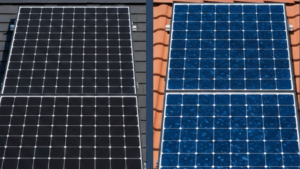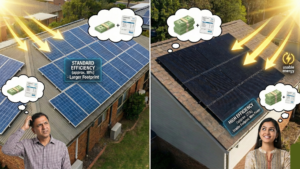What is Massachusetts Smart Programme? How does it work? How this scheme benefits the people of Massachusetts?
The Solar Massachusetts Renewable Target (SMART) Program is DOER’s incentive program to support the development of solar. This programs replaces existing state’s Solar Renewable Energy Credit market.
The rate of solar under SMART program is $0.22 and $0.26 per kilowatt-hour.
https://www.mass.gov/info-details/solar-massachusetts-renewable-target-smart-program
What is smart solar incentive program?
Massachusetts Department of Energy Resources officially announced SMART program in November 2018 to help solar development.
This program was initially designed to support 1600 MW of solar in Massachusetts but in April 2020, it was double to 3200 MW of solar. It replaces existing solar renewable energy credit (SREC) program.
How does Program work?
SMART program serves total capacity of 3200 MW of solar. This capacity is divided into below electric distribution comapany:-
(i) Eversource 1,711.543 MW
(ii) National Grid 1,443.903 MW
(iii) Unitil 32.074 MW
(iv) Nantucket 12.480 MW
The above capacity is allocated on the basis of number of customers are in the utility’s service territory. Based on system characteristics, total capacity is divided into different categories.
How to apply for SMART program?
a. Get the paperwork ready: This includes signing a contract for a small solar system and collecting any documents required by the program.
b. Apply online: Look for the application portal of one of the three electricity providers in your area.
c. Wait for approval: Once you submit the application and paperwork and then they’ll review it and let you know if you qualify for the incentives.
d. Installation and connection: After getting the green light, you can have your solar system installed and connected to the grid.
e. Claim your incentives: Once everything is up and running, submit a final claim to confirm your system’s approval and officially start receiving those incentive payments!
How much amount will be paid under SMART program
Amount will depend upon three factors:-
a. The size of your system
b. Your utility
c. What block the program is in
Incentive depends upon Capacity Block Compensation Rate
| Utility | Current Block | Capacity Block Compensation Rate |
|---|---|---|
| Eversource East | 9 of 16 | $0.25038 / kWh |
| Eversource West | 9 of 16 | $0.21044 / kWh |
| National Grid (Massachusetts Electric) | 10 of 16 | $0.22463 / kWh |
| National Grid (Nantucket) | 3 of 4 | $0.25704 / kWh |
| Unitil | 5 of 8 | $0.22619 / kWh |
What are “adders”?
If you system has certain features, you can be a part of adders program. Consider adding energy storage to your system, qualifying based on your income, or installing your panels in a designated location! Additional Factors can make you eligible for “adders,” which are additional financial rewards on top of the base incentive offered by the program.
How much will I save with the SMART program?
Let’s say you install a 6 kW solar panel system on your roof that produces 12,000 kWh of electricity a year. First your application will be approved for the SMART program. The you will receive the Block 6 Capacity Block Compensation Rate of $0.277723 per kWh of solar energy your panels produce.
In order to calculate how much you can save with the SMART program, you subtract the average cost of electricity ($0.1591 per kWh) from the Capacity Block Compensation Rate.
Subtract that from the block 6 rate, you’re left with $0.118623 per kWh of solar energy you produce.
Net metering allows you to earn credits for the excess electricity your solar panels generate. If your panels produce more than you use in a year, you’ll be compensated for that extra electricity. For instance, if your solar panels generate 12,000 kWh in one year, you’ll stand to save an additional $1,423 on your electricity bill on top of the savings you’re already getting from the SMART program.
When you include the net metering credits, you would then save $3,587.72 per year. That means over the course of 10 years, you would save $35,877.20 with the SMART program and net metering







